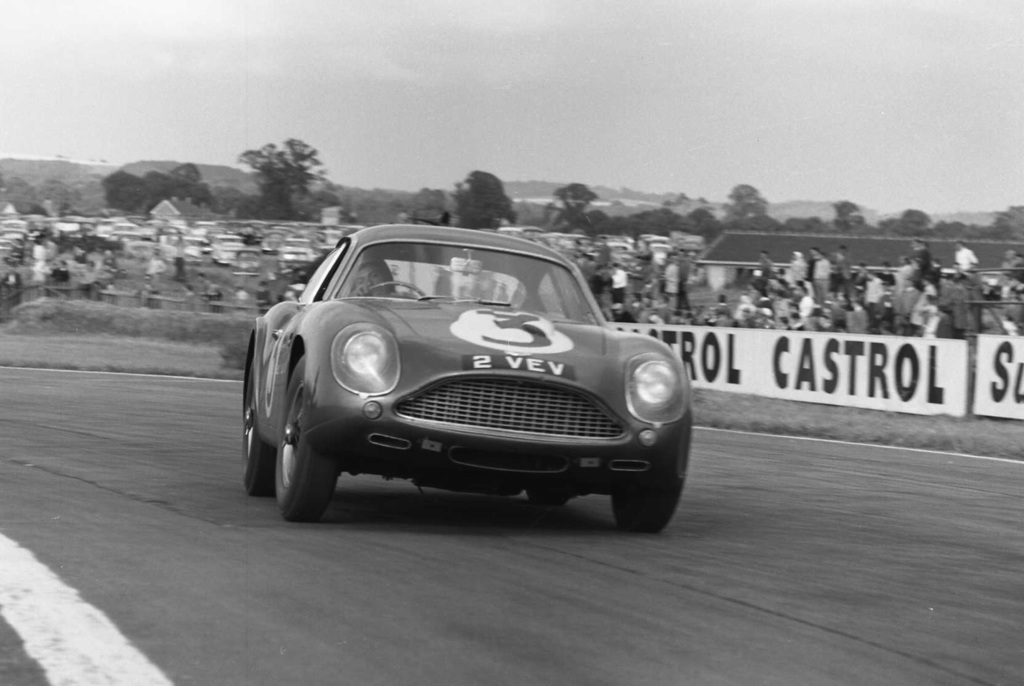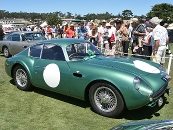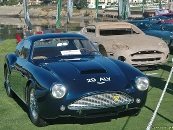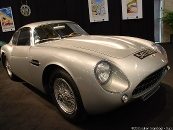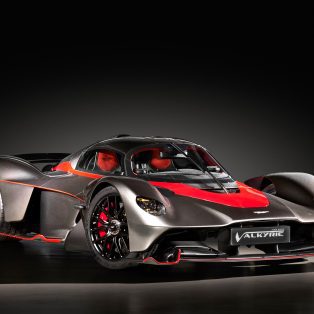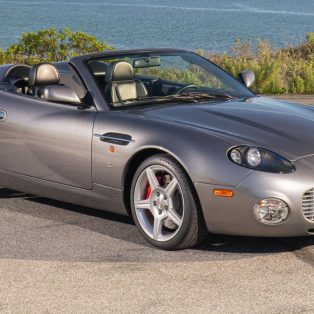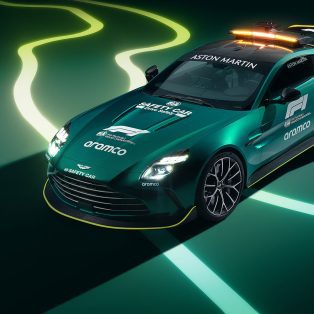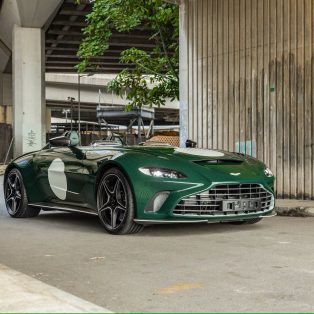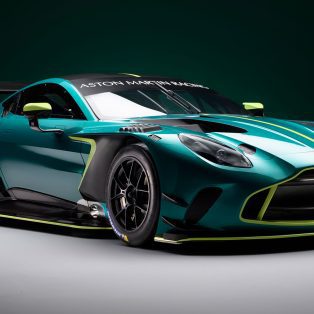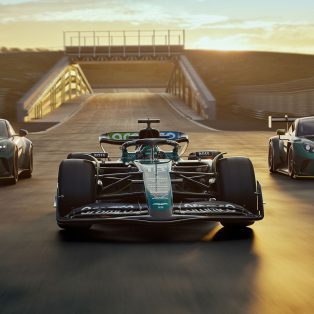1961 Aston Martin DB4 GT Zagato
Although not overly successful, the DB4 GT Zagato was easily one of the most exciting and beautiful British sports cars thanks to its specially built body by Zagato of Milan. It was designed to take a stab at the Ferrari 250 GT roller coaster which was dominating the World Sportscar Championship. It was primarily sold to private race teams, but at least 4 of the 19 cars were built as road cars.
In 1958, the first DB4 was released and received universal acclaim as a successful grand tourer (GT). Much of the DB4 utilized technology from Aston Martin’s earlier race efforts including disc brakes, an independent front suspension and a Superleggra body from Touring of Milan. A year later, Aston Martin was anxious to take it to the track so they introduced the GT model in September of 1959.
The GT model had distinct modifications which prepared the DB4 for racing endurance. These included a shortened the wheelbase, less interior and lighter bodies. The huge hood scoop which distinguished the model was hiding a potent version of the inline-6 that used triple Weber carburetors, twin-spark ignition, high lift camshafts and a 9:1 compression ratio raise power output to 302 bhp. Furthermore the model had a dual-plate clutch, close-ratio transmission, Salisbury Power-Lok differential and larger Girling disc brakes.
Despite a large factory backing, the DB4 GT only achieved moderate success and they were beaten at the 1962 R.A.C. Tourist Trophy by Stirling Moss in a Ferrari 250. Losing their most coveted event to the Italians motivated Aston Martin to take the DB4 to the next level, especially since the purpose built Aston Martin DBR1 had proven itself by winning the 24 Hours of Le mans. John Wyer met Gianni Zagato at Earls Court to hash out an agreement that would ship the first chassis Italy in early 1960.
Based in Milan, Zagato was well known for their lightweight body construction. Well before the DB4, Zagato established themselves building aluminum bodies for Alfa Romeo and clothed many prewar Le Mans winners. Zagato transformed the DB4 GT into a smaller, more lightweight car. Many steel components were replaced by aluminum counterparts. Basically all non-essential elements disappeared such as the bumpers. With the help of Perspex and aluminum components, more than 100 lbs was shed off the DB4 GT.
Styling of the car was enlisted to Ercole Spada who was a newcomer to the Zagato firm and only 23 years old. Within a weeks time he finished the work which became one of the more memorable Zagato cars. It combined the essence of Aston Martin’s shape with Zagato’s free flowing lines. The front incorporated the curved profile of Aston’s signature grill and the front was low enough to warrant twin bulges on the hood for valve cover clearance. In the trunk was a huge fuel tank and spare tire which left little room for anything else.
Simon Kidston describes the car: “The front wing tops taper downward through the doors, then rise aggressively, like the haunches of a beast prepared to spring, over the rear wheels before tapering down and in to integrate cleanly with the rear deck. It is a symphony of refined elegance, purposeful and devoid of superfluous embellishment.” The public first got a look at these lines at the 1960 London Motor Show, two years before Ferrari had a similar treatment done to their 250 GTO.
On the track, the DB4 Zagato raced at many important races alongside cars such as the Ferrari GTO. Unfortunately, due to low rigidity and over steer, it was still beaten by the Ferraris. This may stem from the fact that the car was originally developed as a road car. Even so, the DB4 Zagato is one of the most desirable Aston Martins and it might be Ercole Spada’s masterwork.
In 1991, Aston Martin recreated the Zagato shape on several unused chassis numbers and they became known as the Sanction IIs. These cars almost perfectly replicated the original design except they were not allowed to be built with Zagato badges. In 1991 Richard Williams got permission of Walter Hayes for a third series of Sanction III cars which were built under Zagato license on DB4/0334/R and DB4/0424/R. Both these cars were slightly heavier than the original cars at 2800 lbs and could wear Zagato badges.2
In Detail
| submitted by | Richard Owen |
| type | Racing Car |
| released at | 1960 London Motor Show |
| built at | Milan, Italy |
| body stylist | Ercole Spada |
| coachbuilder | Zagato |
| production | 19 |
| engine | Aluminum, Twin Spark, Inline-6 |
| position | Front Longitudinal |
| aspiration | Natural |
| valvetrain | DOHC 2 Valves / Cyl |
| displacement | 3670 cc / 224.0 in³ |
| bore | 92 mm / 3.62 in |
| stroke | 92 mm / 3.62 in |
| compression | 9.7:1 |
| engine designer | Tadek Marek |
| power | 234.2 kw / 314.1 bhp @ 6000 rpm |
| specific output | 85.59 bhp per litre |
| bhp/weight | 256.41 bhp per tonne |
| torque | 376.92 nm / 278.0 ft lbs @ 5400 rpm |
| redline | 6500 |
| body / frame | Aluminum Alloy over Steel & Aluminum Chassis |
| driven wheels | Front Engine / RWD |
| front tires | 6.00×16 |
| rear tires | 6.00×16 |
| front brakes | Girling Hydraulic Discs |
| rear brakes | Girling Hydraulic Discs |
| front wheels | F 40.6 x 12.7 cm / 16.0 x 5.0 in |
| rear wheels | R 40.6 x 12.7 cm / 16.0 x 5.0 in |
| steering | Rack & Pinion |
| f suspension | Wishbones w/Coil Springs, Telescopic Dampers, Anti-Roll Bar |
| r suspension | Live Axle w/Coil Springs, Lever Arm Dampers, Transverse Watts Linkage |
| curb weight | 1225 kg / 2701 lbs |
| wheelbase | 2362 mm / 93.0 in |
| front track | 1372 mm / 54.0 in |
| rear track | 1359 mm / 53.5 in |
| length | 4267 mm / 168.0 in |
| width | 1557 mm / 61.3 in |
| height | 1270 mm / 50.0 in |
| transmission | 4-Speed Manual |
| gear ratios | 2.49:1, 1.85:1, 1.25:1, 1.00:1 |
| final drive | 3.31:1 |
| top speed | ~241.4 kph / 150.0 mph |
| 0 – 60 mph | ~6.0 seconds |
| 0 – 100 mph | ~14.5 seconds |
| 0 – 1/4 mile | ~14.9 seconds |
| fuel capacity | 113.55 litres or 30 gal. |
Important Chassis & Sales.
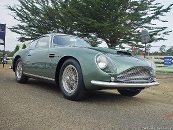
DB4GT/0187/L-One of only two DB4Zs created for street use with full width bumpers and extra chrome trim. This car was shown at the Turin Motor Show and never raced. It was subject to a through restoration by David Sydorick who subsequently displayed it at the 2002 and 2007 Pebble Beach Concours d’Elegance.
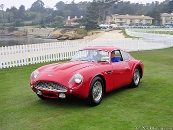
DB4GT/0199/L-This was the second DB4Z produced was first sold to Italy. In the 1970s it was sold to Colin Crabbe for “about £5000”. He blew the engine up at Silverstone and a replacement 3.7-liter engine was fitted with many of the original parts. Robin Hamilton converted it to right-hand drive in 1974. It was then advertised in the autumn of 1975 and sold to a long term owner who kept the car until 2005. It was offered at RM Auctions’ Monterey Sports and Classic Car Auction but did not sell with a high bid of at a high bid of $2,450,000 USD.
Sources and Further Reading
1.Archer, Stephen & Simon Harris. Aston Martin DB4GT Zagato. Palawan Press Ltd.
2.Dowsey, David. Aston Martin: Power, Beauty and Soul. Peleus Press: 2007






